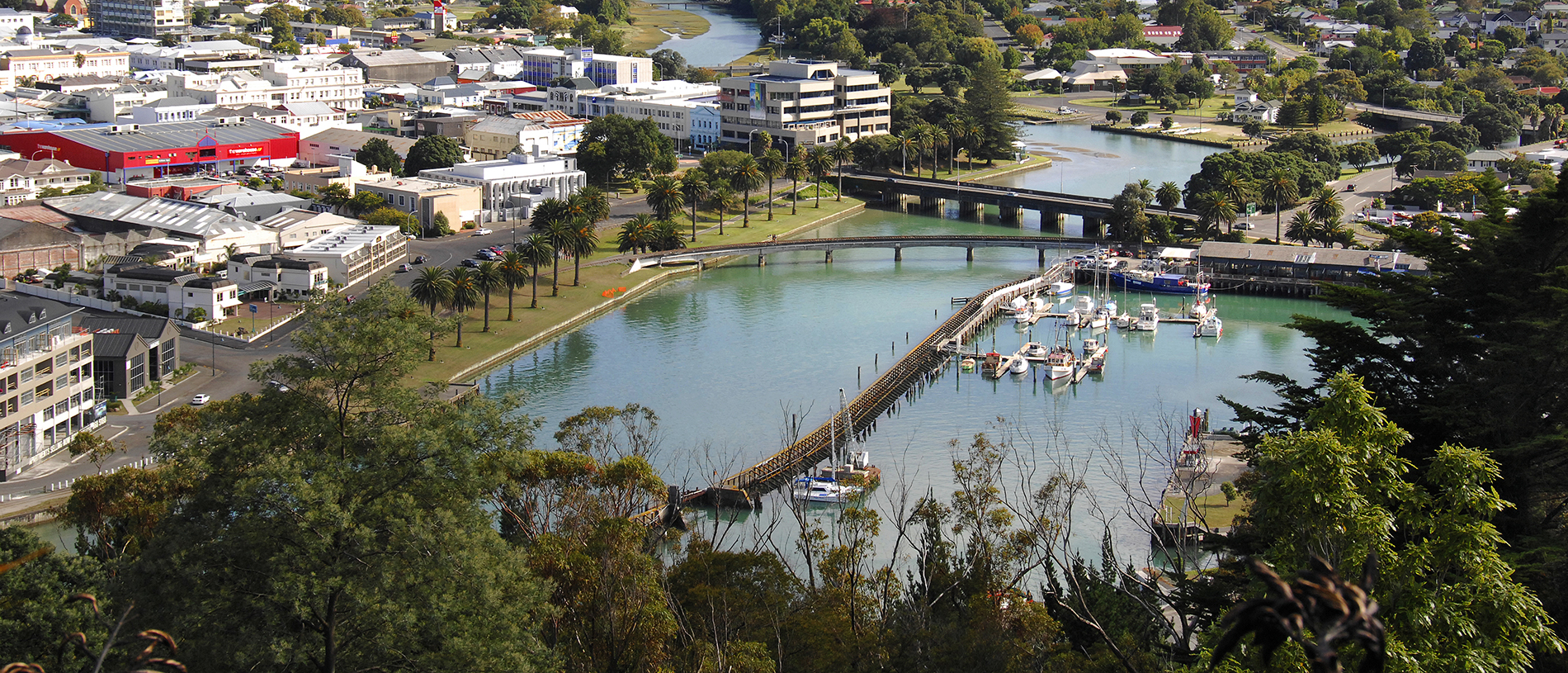
Loved by the locals: Gisborne
From coastal walkways to historic railways, boutique cinemas and famous vineyards, we've picked five things that locals love to do in Gisborne.

Gisborne has what the rest of the world has lost... or is looking for.
Prosperity, joie de vivre, space, peace, quality of life and an awareness among the people who live here that they share a secret, a precious key to nirvana.
In Gisborne, there's an abundance of cheap, fresh produce, kaimoana, locally-made wines and craft beers. There are beaches with world-class surf breaks. A richness of Māori history that you won't find elsewhere, not to mention a mild and accommodating climate.
Hubs
Gisborne, known to the locals as Gizzy, is a compact city of 36,000 people where everything is close-by. To gain a big-picture perspective of the area before exploring the town and hinterland, drive or walk to the top of Titirangi Reserve (Kaitī Hill) and take in the sweeping views across the bay and the fertile flats dissected by three major rivers. It’s a superb vantage point to view Young Nick’s Head (Te Kurī a Paoa), named after Nicholas Young, Captain James Cook’s cabin boy on the HMS Endeavour, who first sighted the dramatic headland with its sheer white cliffs on October 6, 1769.
You can visualise the tall masts of the HMS Endeavour anchored in the bay and Cook coming ashore at a site marked by a tall obelisk near Te Toka a Taiau, a rock in the Tūranganui River where the first meeting between Māori and European actually took place. There’s a controversial statue at the top of the hill which may or may not be an accurate representation of Captain Cook, depending on who you listen to.
To go more deeply into the history of the region, visit Tairāwhiti Museum and Art Gallery which has a well-earned reputation as one of the very best, most innovative regional museums in New Zealand. The museum has excellent permanent exhibitions about Māori and colonial culture, as well as regularly-changing contemporary exhibits including an upcoming series celebrating the tribal identity, rich history and thrilling stories of the Rongowhakaata iwi.
Next door to the museum, is the 28 Māori Battalion C Company Memorial House, a profoundly moving tribute to the Māori men of Tairāwhiti who served in WW2. About 1000 men from the region volunteered for the Company representing six local tribes. Their war effort is famous in Tairāwhiti.
To feel the pulse of Gisborne, visit the Saturday morning Gisborne Farmers’ Market. The market has been operating for ten years and has grown to incorporate vegetables, fruit, cheese, bread, honey, free-range eggs, meat, fish, pickles, pestos, sauces, jams, nuts, flowers, seedlings, hand creams, soaps and wine... of course. Much of the produce is organically grown and there’s also gluten-free breads and crackers and biscuits.
Set up in a large carpark near Tairāwhiti Museum, it has become a popular gathering place on a Saturday morning from 9.30am–12.30pm regardless of weather, on the corner of Stout Street opposite the museum.
For wine aficionados, the best place to get an overview of the region’s magnificent wines is the Gisborne Wine Centre, right on the waterfront in the inner harbour.
Sheltered by hills and mountain ranges, Gisborne’s warm dry climate is moderated by the nearby ocean, with the cooling afternoon sea breezes, typical of many of the world’s great wine-growing regions. These breezes preserve natural acidity and tropical fruit flavours in the wine, and fine clay and silt loam soils create full-flavoured aromatic wines with ‘a haunting marine note’, thanks to the nearby ocean.
Reliable spring rain and long dry summers, combined with both alluvial and heavier clay soils, allow the growing of a wide range of grape varieties, most notably Chardonnay, for which the region has long been famous. Few regions in New Zealand compete with the sheer diversity of varieties produced in Gisborne. White wines range from classic central European grapes like Chardonnay and Viognier to aromatic Gewürztraminer and Pinot Gris, and newer varieties like Arneis, Verdelho and Albariño. The red wines of Bordeaux, Burgundy, the Rhone Valley, Northern Italy and Spain love living here too, especially Cabernet Sauvignon and Franc, Merlot, Malbec, Syrah, Temperañillo and Grenache.
If you happen to be in Gizzy over Labour Weekend, the First Light Wine & Food Festival is the place to be.
Gisborne is not all about the wine though. Beer connoisseurs are well-catered for by the Sunshine Brewery which has been making delicious batch-brewed beer using all natural ingredients since 1989. They are among the oldest independent breweries in New Zealand and now have a new base close to Waikanae Beach.
With 30 percent of New Zealand’s best surf breaks within 10 minutes of the city, surfing is a big deal in Gizzy so it’s a great place to learn.
There are many excellent surfing instructors to choose from here, including Simon Parkin, who offers surfing experiences to children with physical and intellectual disabilities.
Never underestimate this little town.
It’s full of eye-brow raising surprises – the internationally-renowned Paul Nache Gallery displays a collection of contemporary art that you would expect to find only in bigger city centres; Gisborne bar and gig venue Smash Palace won the Best Music Entertainment Venue at the 2016 Hospitality New Zealand Awards in Auckland; and the wildly-zany annual Terrier Race Against Time, a fundraiser started by a group of friends ten years ago over a bottle of bubbly, has raised more than $100,000 to help Tairāwhiti women battle breast cancer.
Gisborne’s iconic Rhythm and Vines music festival is held each year at Waiohika Estate. The event was founded in 2003 by a group of university mates and has grown to become one of the top venues in the world to celebrate the New Year. The three-day event runs from December 29 to January 1.